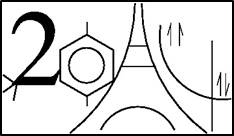The electronic dipole polarizability, a measure of the response of a system to an external electric field, can be considered as the first important term of the dipole moment expansion as a power series in the electric field. Moreover, it is linked to the conceptual DFT through the linear response kernel and the global softness, and plays a relevant paper in the study of dispersion and dipole-dipole interactions. Nonetheless, this tensor in its own cannot describe the local evolution of a molecule when a field is applied, i.e., what atoms or group of atoms are involved. Thereby, several molecular partitionings have been proposed in the literature based on various atomic schemes decomposing it, besides, into two components: on the one hand, the charge delocalization contribution, that depends explicitly on the atom positions and is defined relative to the origin of the coordinate system, and, on the other hand, the intrinsic term. However, in spite of obtaining integrated atomic values, both shape and topology of the global and intrinsic polarizabilities are unknown. Therewith, in this work, we present an implementation scheme to visualize global and intrinsic polarizabities through the Hirshfeld-based atomic regions (Fractional Occupation HirshfeldI approach, FOHI) together with various illustrative examples. Furthermore, this implementation is completely general, that is, it was checked in restricted and unrestricted SCF, post-HF and Kohn-Sham methods, as well as through the analytic and finite field approaches.
To visualize the intrinsic polarizability, we perform a standard FOHI calculation to save the atomic weights. Next, we employ them to partition the first-order density matrices along cartesian directions according to the Hirshfeld-based scheme. After that, each value is multiplied by the corresponding coordinate to achieve all the intrinsic atomic polarizabilities. Finally, the summations are carried out to get the groups of atoms as been necessary.
- Image

 PDF version
PDF version

